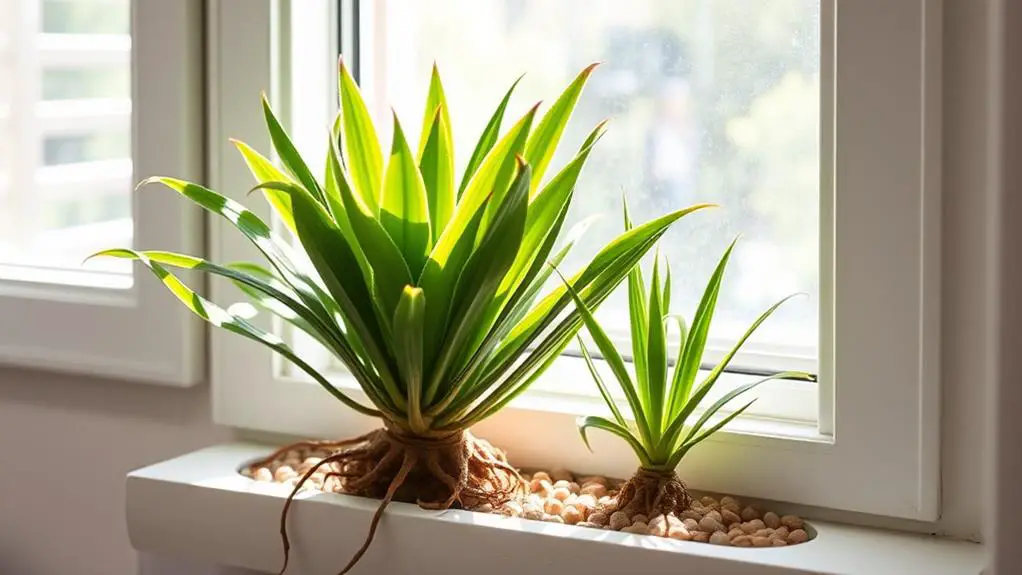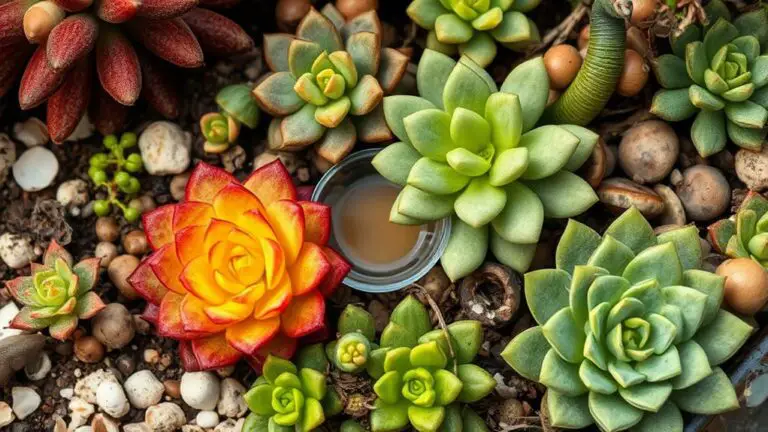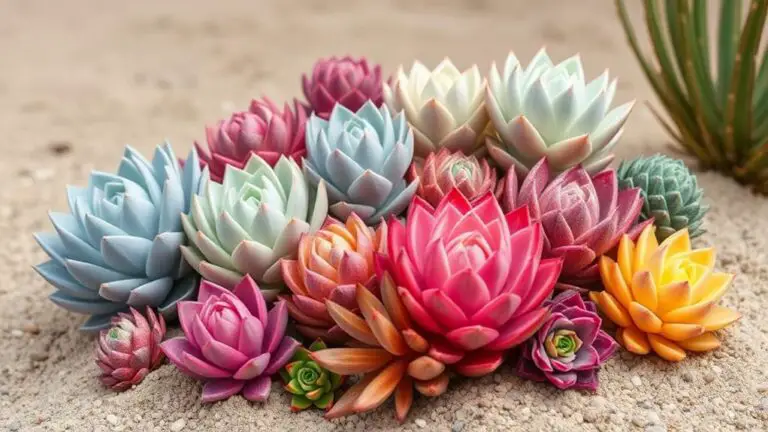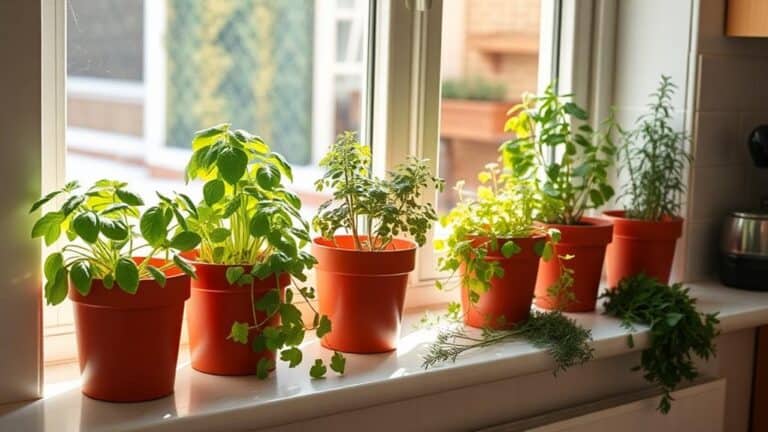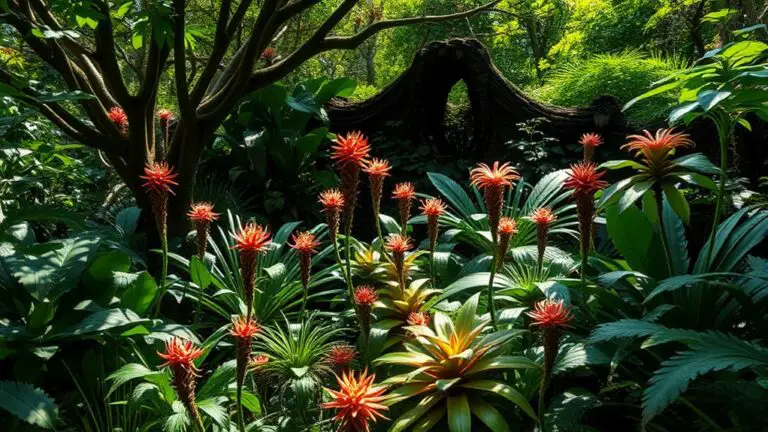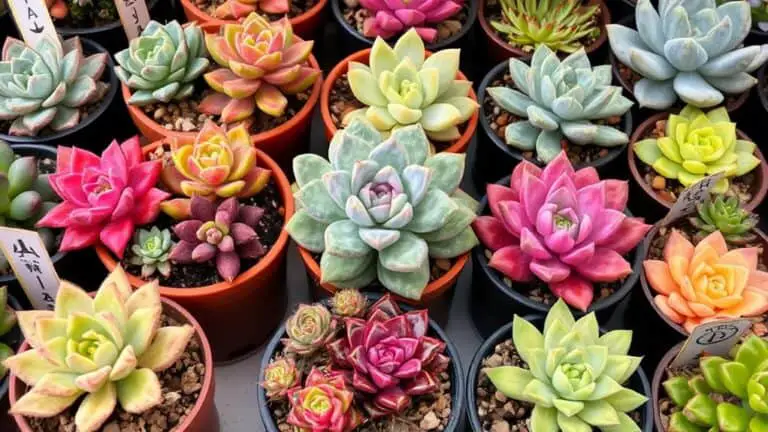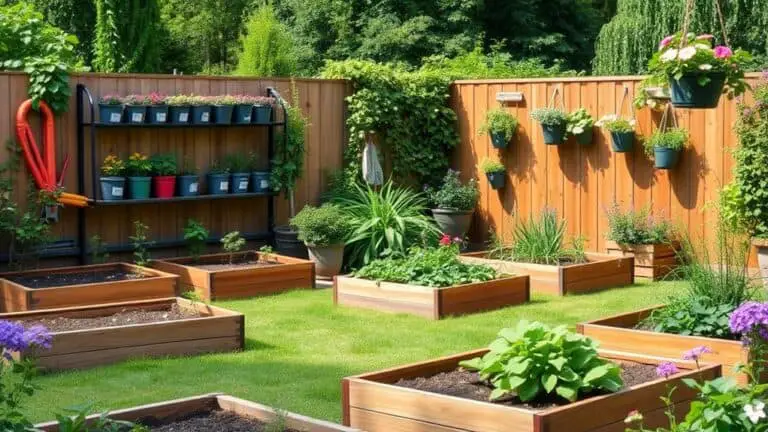7 Essential Steps to Care for Your Window Haworthia
Caring for your Window Haworthia doesn't have to be complicated, but it does require attention to detail. Start by choosing the right location—north or east-facing windows are ideal for providing the bright, indirect sunlight your plant needs. Next, you'll want to guarantee a proper watering schedule and select the right soil mix. But that's just the beginning. When you understand how to repot effectively and fertilize during the growing season, you'll see your Haworthia thrive. Stick around to discover the nuances of these steps and guarantee your plant stays healthy and vibrant.
Choose the Right Location
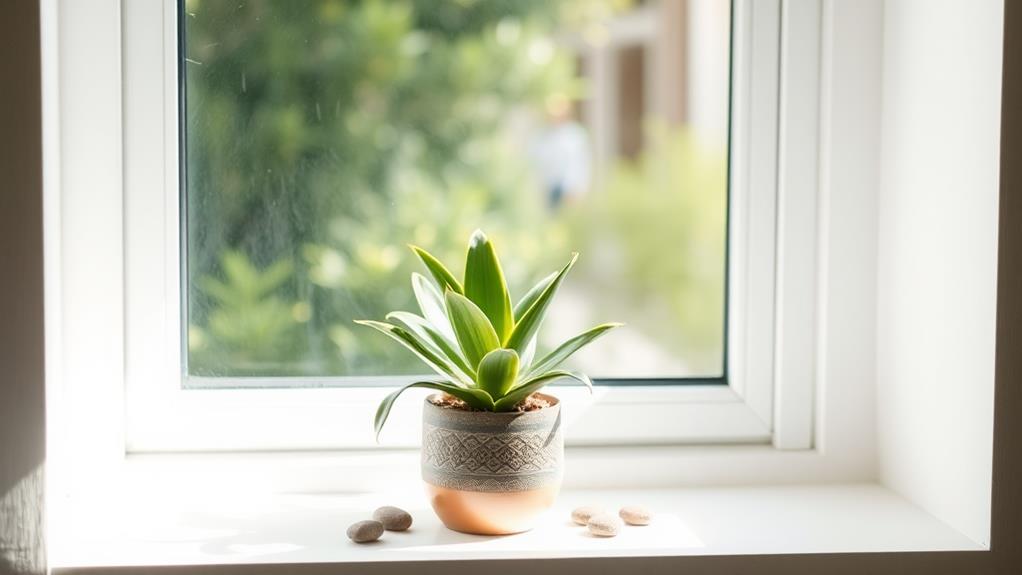
Choosing the right location for your Window Haworthia is essential for its health and appearance. You'll want to place it where it can receive bright, indirect sunlight. A spot near a north or east-facing window is ideal because it mimics the plant's natural habitat. This type of light will help your Haworthia thrive without risking leaf scorching.
Avoid direct sunlight, especially during peak hours, as it can cause sunburn and discoloration on the leaves. If you notice any signs of damage, you might need to move the plant to a shadier spot.
For those of you growing it indoors, using grow lights during darker months can help maintain its health and vibrant appearance.
When positioning your plant outdoors, guarantee it gets morning sun with afternoon shade to protect it from intense heat. Regularly monitor the light exposure your Window Haworthia is receiving.
If you see it beginning to stretch or its leaves becoming pale, it mightn't be getting enough light. Adjusting its location can make a big difference in its overall well-being.
Proper Lighting
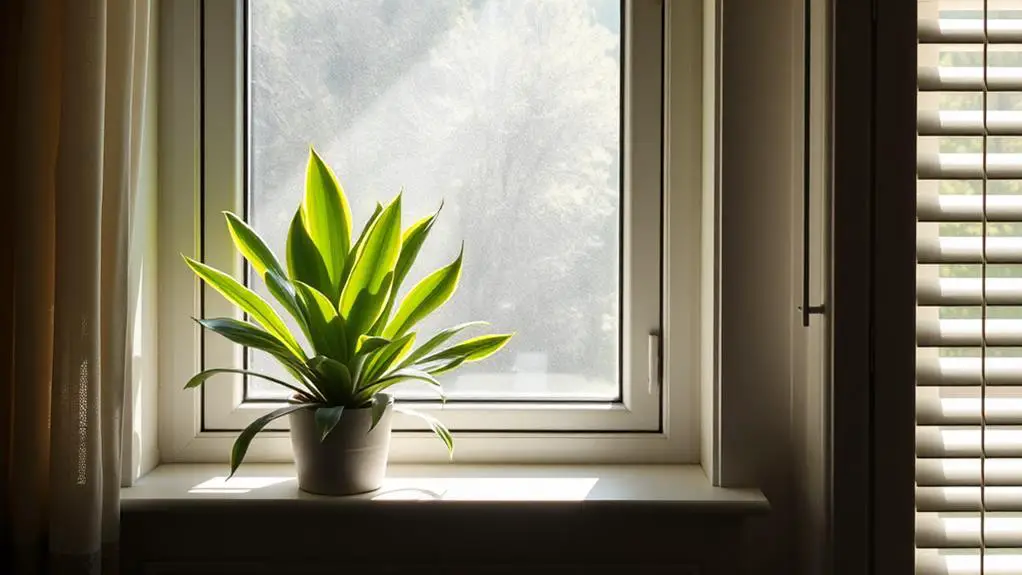
Understanding the importance of proper lighting is the next step in guaranteeing your Window Haworthia flourishes. This succulent loves bright, indirect sunlight, which is perfect for spots near north or east-facing windows. These locations mimic its natural habitat, providing just the right amount of light without being too harsh.
Direct sunlight can be harmful, so it's important to avoid placing your Haworthia in intense afternoon sun. Too much direct light can scorch the leaves, causing discoloration and damage. If you're growing your plant outdoors, it's best to give it morning sun and afternoon shade. This protects the plant from the harshest rays while still offering ample light.
During the darker months, you might notice your Haworthia looking a bit sad. Don't worry! Using grow lights can help maintain its health and vigor. These lights guarantee your plant gets enough light even when natural sunlight is scarce.
If your plant starts stretching and looks leggy, it's a sign it needs more light. Move it to a brighter spot to encourage healthy growth.
Watering Schedule
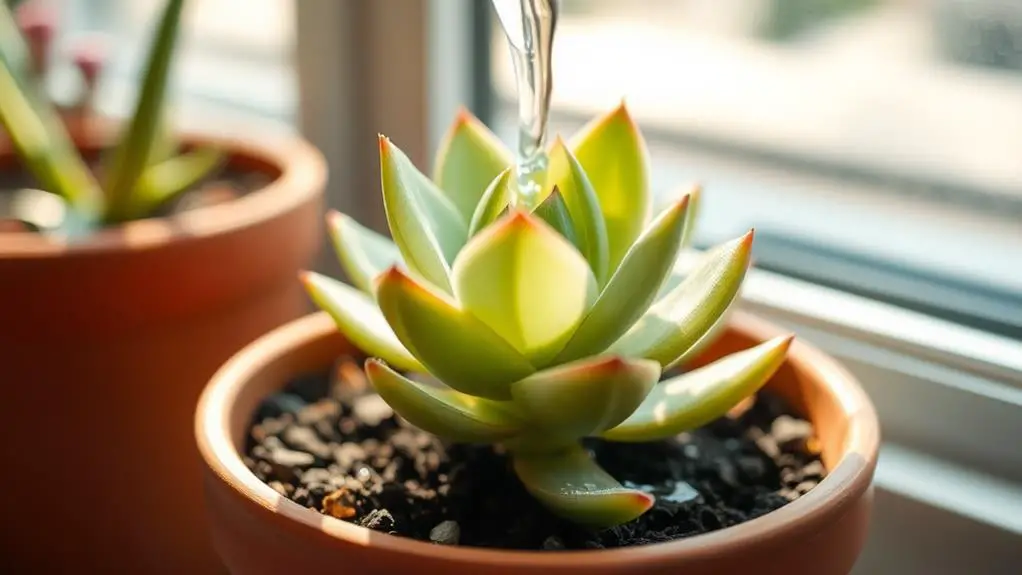
Maintaining the right watering schedule is essential to keeping your Window Haworthia healthy. You'll want to water your plant only when the top inch of soil is completely dry. This helps you avoid overwatering, which can cause root rot.
During the growing season, which includes spring and summer, you should increase watering to about once every 1-2 weeks. The exact frequency depends on your specific environmental conditions, like humidity and temperature.
As fall and winter roll in, your Window Haworthia enters its dormant season. During these cooler months, reduce your watering schedule to roughly once a month. This guarantees you prevent excess moisture and keep the leaves nice and plump.
Always use room temperature or lukewarm water for the best root health. Remember to avoid wetting the leaves to prevent any potential rot.
If you're growing your plant outdoors, you may need to water it bi-weekly during warm months. On the other hand, indoor plants typically require watering every 3 weeks.
No matter where you grow your Window Haworthia, make sure you use well-draining soil to help manage moisture levels effectively. This way, your plant will thrive for years to come.
Soil Requirements
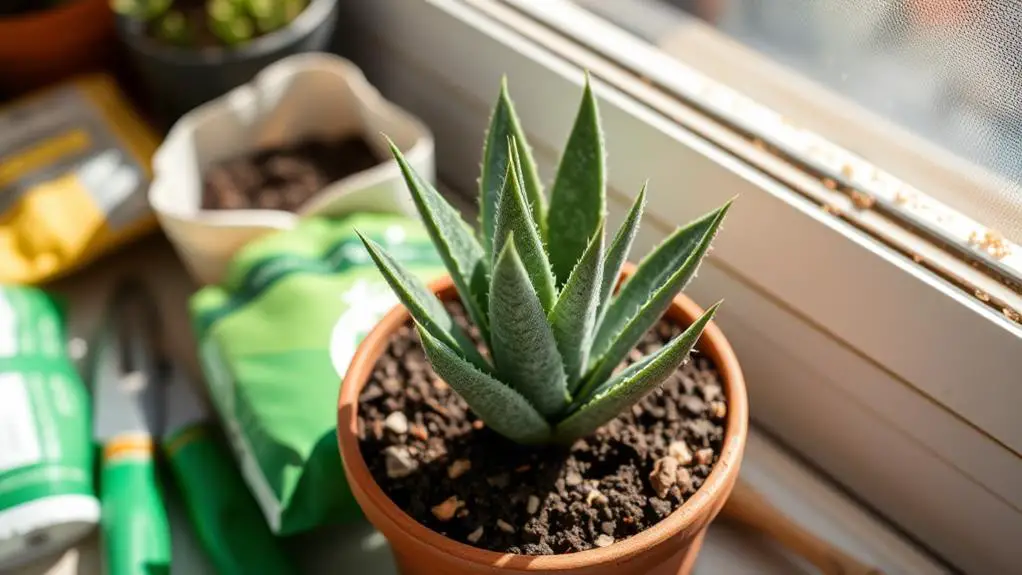
To keep your Window Haworthia happy, focus on using the right soil mix.
A blend of half potting soil and half gritty material like sand or perlite works well, ensuring good drainage to prevent root rot.
Shallow pots with drainage holes are also essential to maintain the right moisture levels.
Optimal Soil Composition
A critical aspect of caring for Window Haworthia is ensuring it has the right soil composition. You want to use well-draining soil to prevent root rot, which can seriously harm your plant. A standard succulent mix is perfect for this purpose.
To create an ideal mix, combine half potting soil with half coarse grit like sand, perlite, or pumice. This combination helps the soil drain efficiently, keeping your Haworthia's roots healthy.
Be cautious not to use fine sand, as it can compact the soil, reducing its drainage ability. Compacted soil can lead to soggy conditions, which promotes root rot and attracts pests. Regularly checking your soil's drainage capabilities is a good practice to adopt. If you notice water pooling or the soil staying wet for too long, it's time to refresh the mix.
Also, shallow pots with ample drainage holes are best for your Window Haworthia. These pots allow better airflow, preventing the roots from sitting in water.
Ensuring a well-draining soil composition and the right pot will keep your Window Haworthia thriving, giving you a beautiful, healthy plant to enjoy.
Enhancing Soil Drainage
Ever wondered how to keep your Window Haworthia's soil in excellent condition? It's all about enhancing soil drainage to support your plant's root system. Start by choosing a well-draining soil mix designed for succulents. A good option is a cactus mix or a blend of half potting soil and half gritty material like sand or perlite. This guarantees your plant has the proper environment it needs to thrive.
Make certain your pot has drainage holes. These holes prevent water from accumulating, which is vital to avoid root rot. Incorporating 30-50% pumice or perlite into the soil mix further enhances drainage and provides the roots with the necessary airflow.
Here's a quick reference table to help you:
| Step | Material | Purpose |
|---|---|---|
| 1 | Cactus mix or blend of potting soil and grit | Base mix for drainage |
| 2 | Pumice or perlite (30-50%) | Improves drainage and airflow |
| 3 | Pot with drainage holes | Prevents water accumulation |
| 4 | Shallow pot | Supports compact root system |
Avoid using fine sand, as it can compact the soil and block drainage, leading to fungal diseases. Shallow pots are ideal since they provide ample drainage and suit the compact root system of Window Haworthia. With these steps, you'll maintain a healthy moisture balance for your plant.
Soil Fertility Management
Managing soil fertility for your Window Haworthia guarantees it gets the nutrients needed for robust growth.
Start with well-draining soil to prevent root rot. A standard succulent mix works great, or you can mix regular potting soil with coarse sand or perlite. Aim for about 30-50% pumice or perlite in your mix to enhance drainage and stop the soil from compacting. This helps prevent fungal diseases and keeps your plant healthy.
Avoid fine sand because it compacts and blocks drainage. Instead, use gritty materials that allow good airflow and moisture management.
Remember to repot your Window Haworthia every 2-3 years or when it looks like it's outgrowing its pot. This refreshes the soil and keeps the fertility levels just right for your plant's needs.
Fertilizer isn't necessary during the dormant fall and winter months. But during the growing season, a light feeding with a balanced liquid fertilizer can support your plant's growth.
Just be careful not to overdo it, as too much fertilizer can cause salt build-up in the soil.
Follow these steps, and your Window Haworthia will thrive!
Potting and Repotting
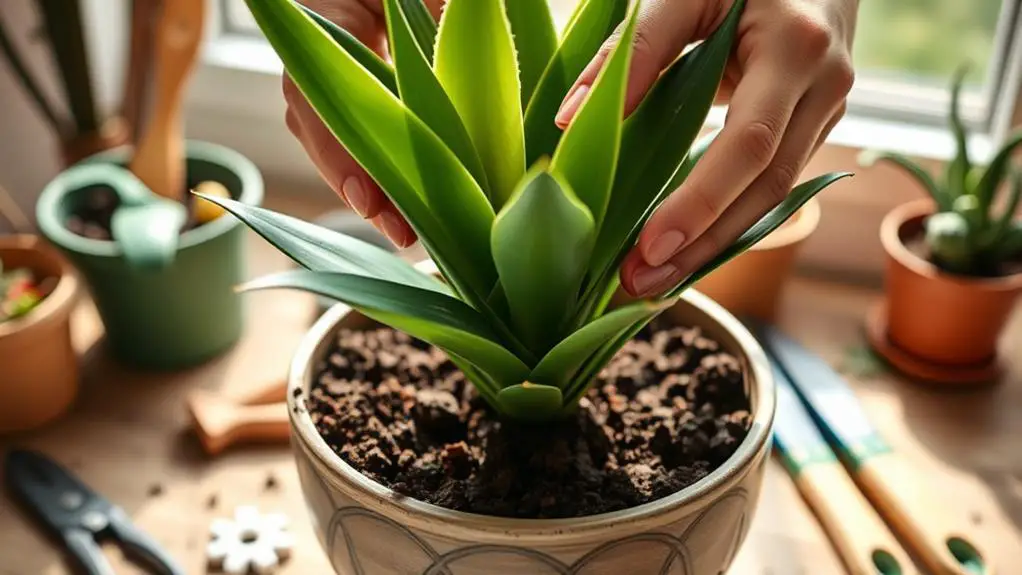
Choosing the right pot for your Window Haworthia is essential for its health. A snug pot helps prevent overwatering by limiting excess soil moisture, which can harm the root system. When you're potting your plant, opt for a container that just fits the roots. Too much space can lead to waterlogged soil and root rot.
Repotting should be done every 2-3 years or when your plant outgrows its current pot. This promotes healthy growth and gives the root system more room to expand. The best time for repotting is during spring or summer, which is the growing season for Haworthias. This timing helps the plant cope better with the stress of being moved.
When repotting, gently take the plant out of its old pot. Brush away the old soil and carefully loosen any tightly bound roots. This step is vital to prevent damage and encourage new growth.
After repotting, it's important to wait one week before watering. This allows the roots to recover and lessens the risk of root rot.
Fertilization Tips
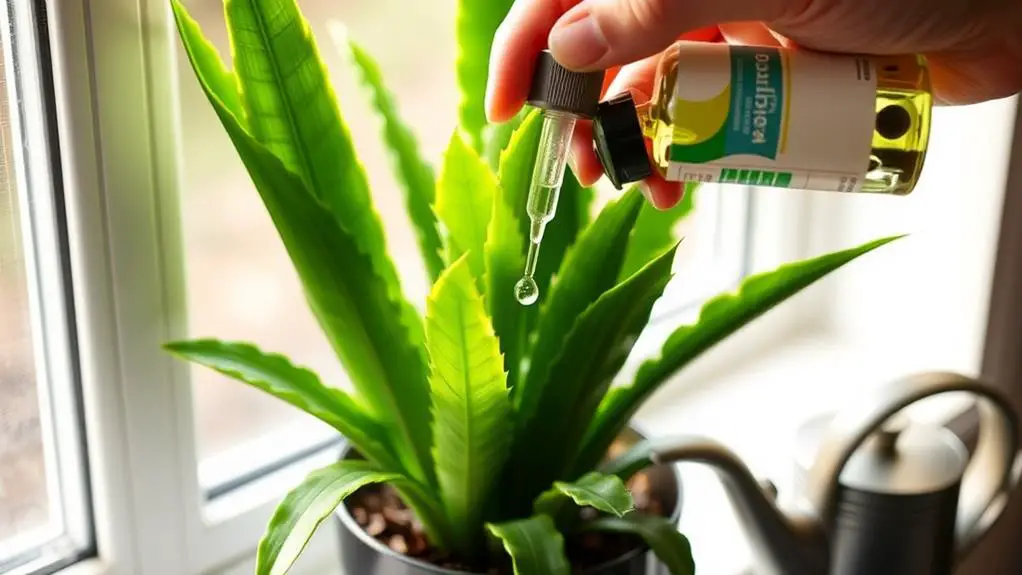
To keep your Window Haworthia healthy, use a diluted, balanced liquid fertilizer during the spring and summer growing seasons.
Avoid fertilizing in fall and winter when the plant is dormant to prevent nutrient build-up.
Stick to a light feeding schedule and choose a fertilizer designed for succulents or cacti, following the label's instructions.
Balanced Liquid Fertilizer
When caring for your Window Haworthia, using a diluted, balanced liquid fertilizer during the growing season is vital to providing essential nutrients. This guarantees your plant gets everything it needs to thrive. Apply the fertilizer approximately once every 4-6 weeks.
Always follow the manufacturer's instructions on dilution ratios to avoid over-fertilizing, which can harm your plant.
Before you fertilize, make certain the soil is moist. This helps prevent root burn and promotes healthy nutrient absorption. Simply water the plant a bit before applying the fertilizer. A healthy root system is essential for your Window Haworthia, and keeping the soil moist helps protect it when adding nutrients.
Remember, less is more with fertilizing. Overdoing it can lead to salt build-up in the soil, which may damage your plant. If you're unsure, it's safer to use less fertilizer rather than risk over-fertilizing.
Avoid fertilizing in the fall and winter. During these seasons, your Window Haworthia enters a dormant phase and doesn't need extra nutrients.
Seasonal Feeding Schedule
It's crucial to establish a seasonal feeding schedule for your Window Haworthia to guarantee it receives the right nutrients at the right times. During the active growing season in spring and summer, fertilizing once a month with a diluted, balanced liquid fertilizer helps support healthy growth. Make sure to use a fertilizer specifically designed for succulents or cacti and follow the label directions to avoid over-fertilization, which can lead to salt build-up.
Avoid fertilizing in the fall and winter when the plant is dormant. It doesn't need additional nutrients during this period, and doing so can harm the plant. Always apply fertilizer to moist soil to prevent root burn. Keep an eye on your Window Haworthia for signs of nutrient deficiency, such as slow growth or yellowing leaves, and adjust your fertilization practices as needed.
Here's a quick reference table to help you with your fertilization schedule:
| Season | Frequency | Notes |
|---|---|---|
| Spring | Once a month | Use diluted succulent/cacti fertilizer |
| Summer | Once a month | Apply to moist soil |
| Fall/Winter | No fertilizing | Plant is dormant |
Addressing Common Problems
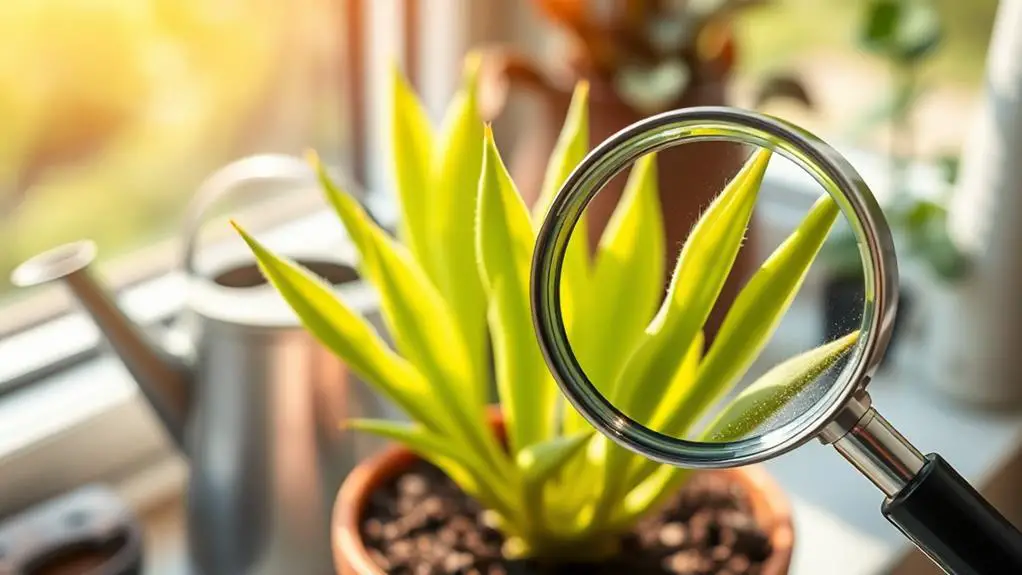
Caring for window Haworthia isn't without its challenges, but many common problems can be easily managed with a bit of knowledge and attention.
Overwatering is the most common issue you'll face. It leads to yellow, mushy leaves and root rot. To avoid this, guarantee the soil dries out completely between waterings. On the flip side, underwatering causes shriveled, wrinkled leaves, so keep a consistent watering schedule, adjusting for seasonal changes.
Insufficient light can also be a problem, causing the plant to stretch and grow elongated. Place your Haworthia in bright, indirect light to prevent this.
However, too much direct sunlight, especially during midday, can scorch the leaves and cause discoloration. Find a balance by placing your plant where it gets bright but filtered light.
Pests like mealybugs and spider mites can also affect your Haworthia. You'll notice sticky residue on the leaves if these pests are present.
Treat infestations promptly with insecticidal soap or a gentle wipe-down with a damp cloth to prevent further damage. With these steps, you'll keep your window Haworthia healthy and thriving.
Frequently Asked Questions
How Do You Care for Haworthia Window Panes?
To care for your Window Haworthia, place it in bright, indirect light. Water only when the top inch of soil is dry. Use well-draining soil, fertilize in the growing season, and repot every 2-3 years.
How to Take Care of Haworthia?
Place your Haworthia in bright, indirect sunlight. Water when the top inch of soil is dry. Use well-draining soil and fertilize during the growing season. Repot every 2-3 years. Adjust watering frequency with seasons.
Do You Water Haworthia From the Top or Bottom?
You should water Haworthia directly at the soil level, not from the top. Avoid top watering, especially if there's a rosette, as it can trap water and cause rot. Always let the soil dry out completely between waterings.
How Do You Keep Haworthia Alive?
Keep your Haworthia alive by placing it in bright, indirect light, watering only when the soil's dry, using well-draining soil, fertilizing during the growing season, and repotting every 2-3 years. Avoid overwatering to prevent root rot.
Conclusion
You've got this! By following these seven essential steps, you'll guarantee your Window Haworthia thrives. Remember to place it by the right window, give it proper lighting, and water it just when the top soil dries. Use well-draining soil and repot every few years. Fertilize during its growing season and keep an eye out for common issues. With a little care and attention, your plant will be healthy and happy. Enjoy nurturing your Window Haworthia!

